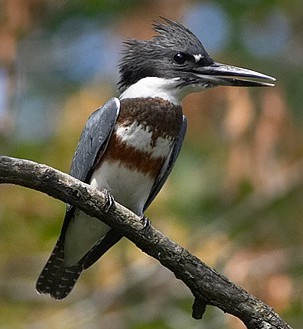 The nutrient composition of vertebrates is relatively constant, with the main differences being the amounts of fat and thus the caloric density. Mammals tend to have more fat than birds or lizards, but in all vertebrates the amount is highly variable, depending on the age, species, and individual.
The nutrient composition of vertebrates is relatively constant, with the main differences being the amounts of fat and thus the caloric density. Mammals tend to have more fat than birds or lizards, but in all vertebrates the amount is highly variable, depending on the age, species, and individual.The protein content of vertebrate foods varies inversely with the fat content, but the protein quality is uniformly excellent. The balance of essential amino acids closely resembles the requirement of birds. In general, vertebrate foods are also very high in readily digestible vitamins and minerals.
The water content of vertebrate foods ranges between 50-80%, which is sufficient to fulfill the water needs of birds in many environments and a drinking-water source is not absolutely required.
Beaks have adapted to aid in procuring and sometimes tearing apart prey: pointed with sharp edges, hooked tip that holds and rips; toothlike patterns or rough tongues to hold slippery fish. Vultures have almost no feathering on the head, which minimizes the contamination of the head by tissue debris.
There is an expandable esophagus, which is enlarged at the junction with the proventriculus. In some species, a distinct crop is present (e.g., falcons). The proventriculus and gizzard are large to accommodate large meal sizes with high protein content. The gizzard of many carnivores and piscivores lacks distinct pairs of thin and thick muscle and functions to massage and mix the contents rather than grind them. The pancreas is small relative to that of granivores and herbivores, presumably due to the high digestibility of flesh and the lack of need for amylase. The small intestine is usually short relative to most other birds. Many have vestigial ceca.
When consumed whole, vertebrate prey represent a complete nutritional package that is not deficient in any nutrient, including water. Indigestible components, e.g., bones and skin, are egested. A slow rate of passage allows efficient digestion. The metabolizable energy in vertebrate food is about 75%. Large quantities of hydrochloric acid and pepsin are secreted from the proventriculus to digest the food.
Most carnivorous and piscivorous birds raise altricial young, probably a result of the physical prowess and skill required to locate and kill vertebrate prey. Carnivores can have a significant impact on populations of rodents.